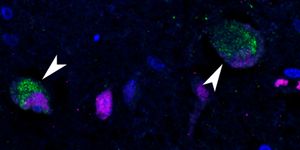A New Lead on Premature Brain Aging
A new study published in Aging showed that white matter hyperintensities (WMHs) are independently associated with premature brain age in an aging cohort. White matter hyperintensities (WMHs) are neuroimaging markers of small vessel disease and may indicate subtle signs of neural degeneration. Brain age is an MRI-derived estimate of brain tissue loss that can determine patterns of aging-related atrophy.
Brain age was calculated using machine learning on whole-brain tissue estimates from T1-weighted images using the BrainAgeR analysis pipeline in 166 healthy adult participants. One measure of premature brain aging included a positive difference between estimated brain age and chronological age (BrainGAP). WMHs were manually delineated on fluid-attenuated inversion recovery (FLAIR) images, an advanced magnetic resonance imaging sequence that facilitates the detection of superficial brain lesions. WMH load is the cumulative volume of WMHs, which is also used to evaluate potential cognitive dysfunction. The researchers then calculated partial Pearson correlations between BrainGAP and the volume of white matter hypersensitivity.
The findings indicated a statistically significant relationship between premature brain aging and WMHs load. Chronological age also showed a positive correlation with WMH load, indicating older participants had increased WMH load. Each additional year in brain age beyond chronological age corresponded to an additional increase in WMH load.
Since this study indicates that WMHs are an independent factor associated with premature brain aging, the findings emphasize the need for the development of preventative strategies for brain disease in aging populations. The study highlights how white matter disease can negatively impact global brain integrity and accelerate age-related brain atrophy.
Previous studies have associated WMH load with working memory performance. The Mayo Clinic has investigated white matter hypersensitivity association with renal insufficiency, vascular risks, and cognitive dysfunction. Clinicians can improve recovery and survival rates for those experiencing WMH load complications by knowing how to minimize risks associated with WMH accumulation and developing novel treatments.
Sources: Aging, Eureka News Alert








